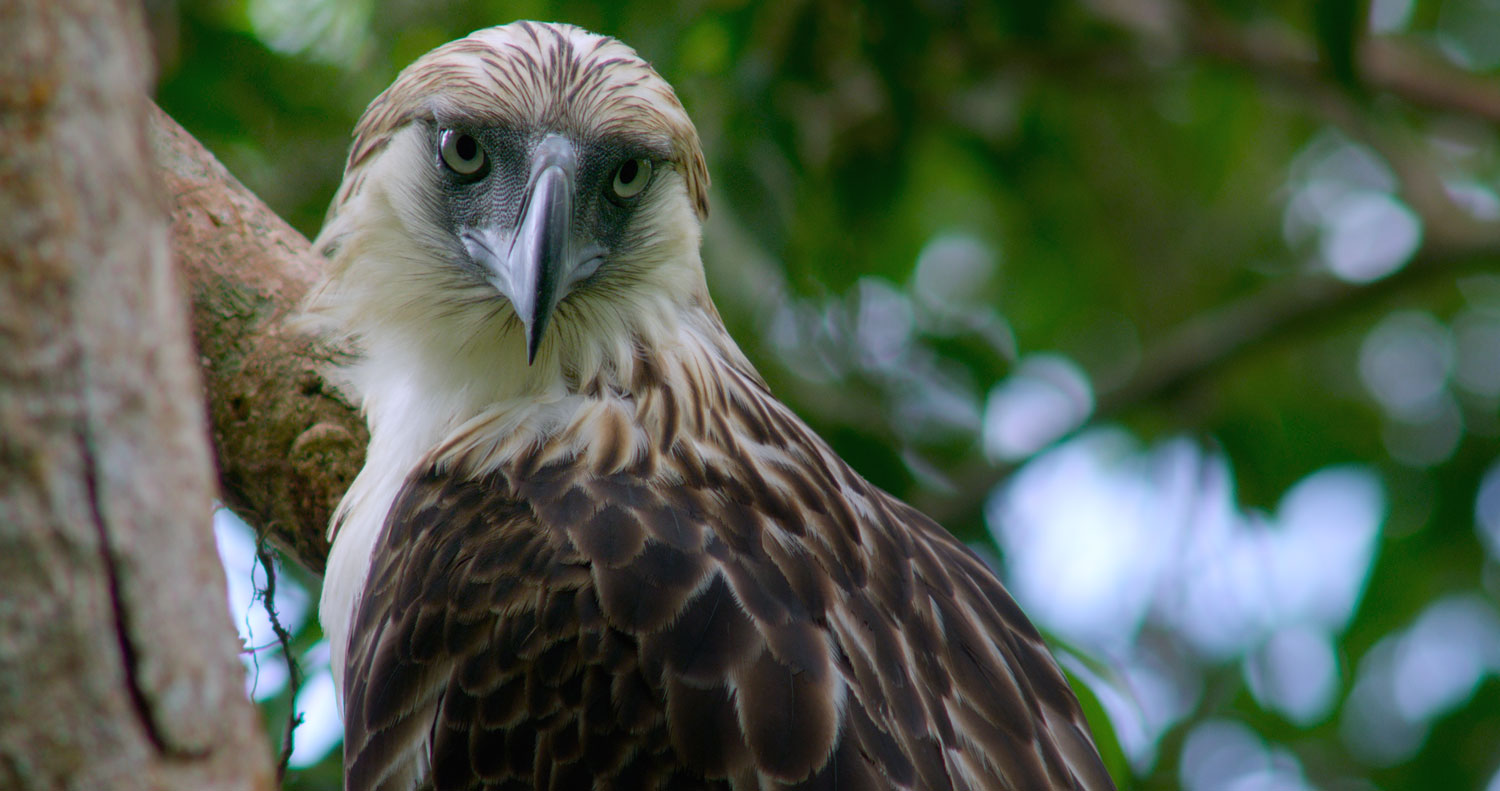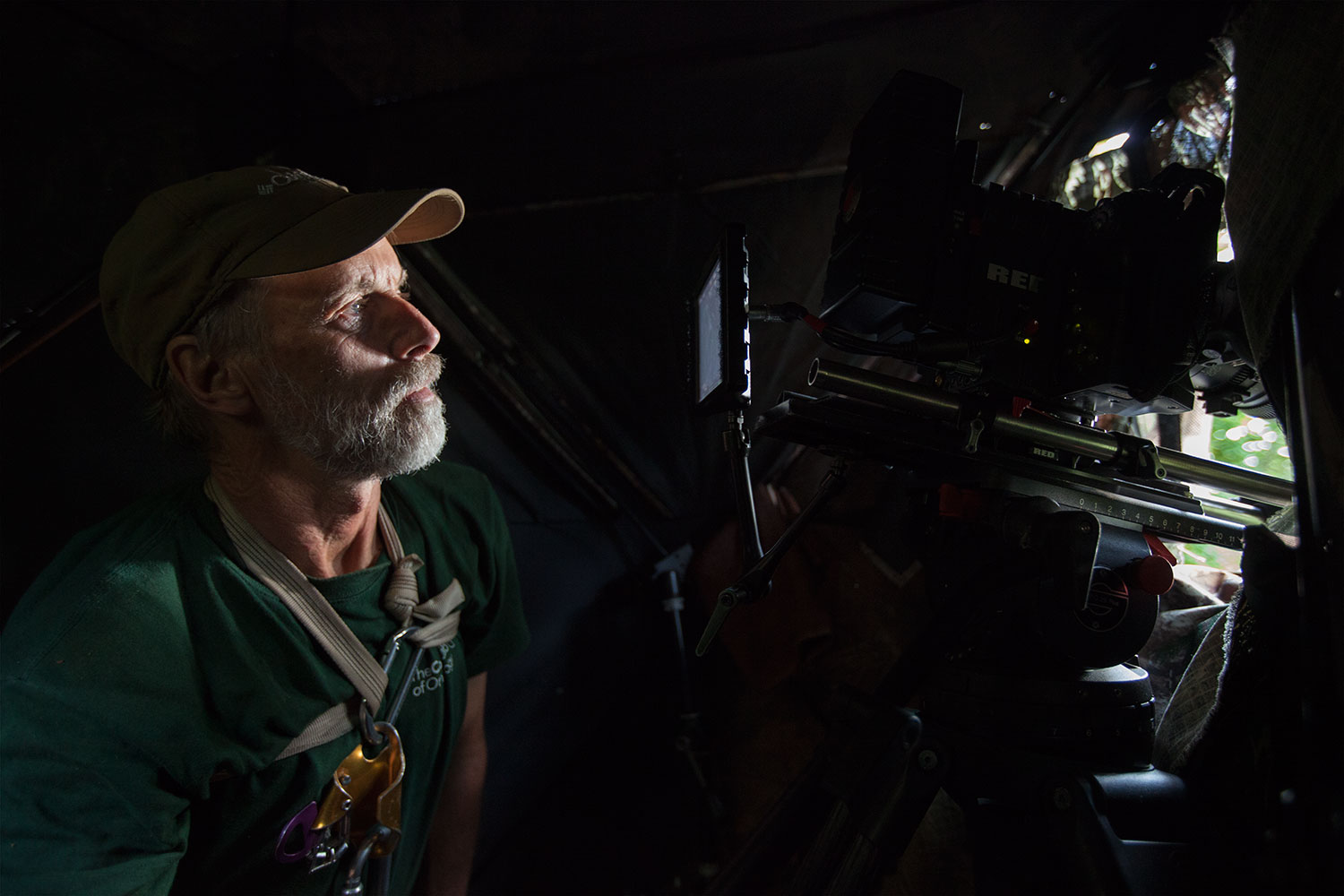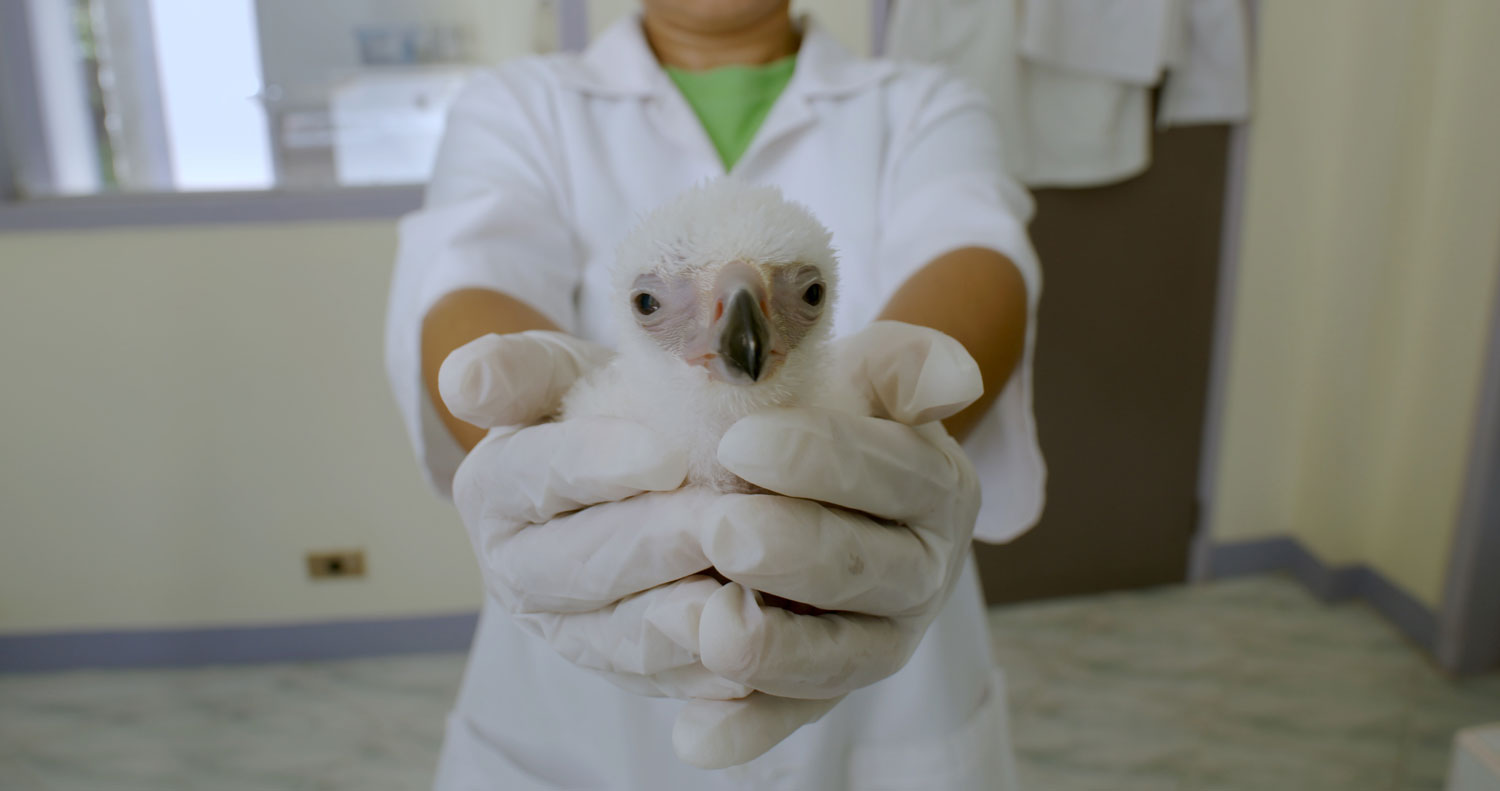What a ‘Bird of Prey’ Can Teach Humans
/The Philippine Eagle (Photo courtesy of the Cornell Lab of Orinthology)
Animal disappearances may soon be as common as crows. In its May 2019 report from the Intergovernmental Science—Policy Platform on Biodiversity and Ecosystem Services (IPBES), the UN reported “up to 1 million species threatened with extinction, many within decades.”
According to IPBES Chair, Sir Robert Watson, “The health of ecosystems on which we and all other species depend is deteriorating more rapidly than ever. We are eroding the very foundations of our economies, livelihoods, food security, health and quality of life worldwide.”
Even if a number as tidy as one million sounds like a loose estimate, potential mass extinction of anywhere near that many animal and plant species can intimidate people into paralysis. Folks who are stirred to action will be encouraged by the proven approaches available for helping nature rebound. They can start by streaming “Bird of Prey.” The award-winning documentary offers a blueprint for saving individual species originating from a collaboration between the film’s producer, Cornell Lab of Ornithology, and the Philippine Eagle Foundation.
Since its debut in 2017, “Bird of Prey” has earned 18 awards and counting, including Best Film by the Banff Mountain Film Festival, Best Cinematography by the Atlanta International Documentary Festival and Innsbruck Eco Film Festival, Best Nature Film by Spain’s Cinema FIA Film Festival, and Best Environmental Film from the DocUtah Film Festival.
A Roadmap for Survival
Approximately 800 Philippine Eagles inhabit treetops in old-growth forest surrounded by some of the harshest terrain in the country. “Bird of Prey” chronicles the efforts of lab and field workers to protect the eagle through the lens of wildlife cinematographer Neil Rettig, upon his return to filming the Philippine Eagle 36 years after his groundbreaking “To Free an Eagle” documentary with the BBC.
Director and CInematograoher Neil Rettig (Photo courtesy of the Cornell Lab of Orinthology)
Neil’s 1977 documentary influenced President Ferdinand Marcos to change the name of the kingly crested raptor from the menacing Monkey Eating Eagle to Philippine Eagle. “Bird of Prey” Director, Eric Liner, recalls, “People like monkeys. ‘Philippine Eagle’ would instill a greater sense of pride and be a more fitting choice for this regal animal found only in the Philippines.”
While the presidential declaration burnished the image of the eagle for future conservation efforts, it does not make up for the over 741,000 acres of old-growth forest that were decimated annually, thanks to logging concessions President Marcos granted his friends and relatives.
Even with a ban on commercial logging of natural forests, the loss of trees continues today with approximately 389,000 acres destroyed annually. With habitat destruction goes the depletion of remaining eagles in the wild. If the rate of decline persists, it’s predicted that the Philippine Eagle will vanish in 50 years.
In “Bird of Prey,” Neil’s personal journey connects four central themes offering a roadmap for protecting endangered species worldwide:
1) Observe with minimal interference: The film-making team slogs into remote jungle on Mount Sinaka in North Cotabato Province to film a nesting pair of eagles in a luan tree.
2) Captive breeding: The laboratory at the Philippine Eagle Foundation, located outside Davao City, incubates a fertile egg.
3) Rescue and release: Philippine Eagle Foundation staff members find a juvenile eagle almost fatally injured by an air rifle pellet and nurse it back to health with the goal of returning it to the wild.
4) Raise public awareness through education: Young children take part in a classroom play on the journey of a Philippine Eagle.
Those four priorities merge seamlessly into a narrative that communicates the urgency to protect a stunning creature and land that have for too long been forsaken to the forces of greed. “Bird of Prey” could help save the Philippine Eagle and inspire a national consensus against further degradation of an archipelago of over 7,000 islands whose biodiversity was once as close to Eden as Noah ever sailed.
In the film, Cielito Habito, former economic chief under the Ramos Administration, isn’t exaggerating when he says, "I think people have to realize that saving the Philippine Eagle and saving the Philippine forests go way beyond what meets the eyes. It is really saving our own source of livelihood. Our very own future as a country."
A Story that Relates
Since the majority of Filipinos live in cities, most will never trek the forests to see a Philippine Eagle in the wild. The filmmakers realize the importance of forming a bond between bird and human through a compelling story that weaves through the history of the eagle’s decline toward today’s dedicated professionals who are fighting to reverse course.
Much of the 118 days of filming takes place in Arakan in the Province of Cotabato on a close-blind tree platform 110 feet above ground and 62 feet from the nest in the next luan tree. “You have to create a degree of empathy for the eagle, a way for the audience to empathize and identify with it,” says Eric. “For ‘Bird of Prey’, that meant establishing a sense of family and showing that these powerful, occasionally fearsome creatures are capable of remarkable tenderness and caring. We worked really hard to get people to fall in love with the eagle family that’s shown in the film.”
Rettig in a close-blind tree platform (Photo courtesy of the Cornell Lab of Orinthology)
That one eagle family is truly the heart of the film. “Almost the first third of the film is spent developing the eagle ‘characters’ and building that relationship between audience and animal,” recalls Eric. “I think their story, in combination with the sort of infectious passion that you witness from Neil and others in the film, helps get the audience to a place where they feel invested. And if you can get people emotionally invested, when the time comes, you’re more able to effectively convey the full weight and impact of what it means to lose the species.”
Never Giving Up
Asian Development Bank reports that over 25 percent of the Philippine population lives below poverty level. The Philippine Statistics Authority ranks Manila with the greatest population density in the world. Overcrowding in the cities is driving many among the poor to rural areas near the few forests inhabited by the eagles. Such pressures put the future of the eagle in increasing jeopardy.
Eric admits that when his team embarked on the project, they were cognizant of the possibility that “Bird of Prey” might become the last recorded view of Philippine Eagles in the wild. He recalls, “The potential of extinction and loss was something everyone on the crew was very aware of during production, this notion that we might be filming the eagle for posterity, for the archives, so that many years from now people can look back and see the eagle and the forest as it had once been.”
But documenting the bird’s final flight wasn’t an actual goal. “Our hope, of course, is that because we filmed the bird and can bring this movie and footage to the world, that people will be moved to help conserve the species and that many years from now we can say that these images and sounds are a record of what exists in the Philippines and not what once existed.”
The Cornell Lab Multimedia Unit could have dedicated its first film production to any among the thousands of other endangered birds of the world but chose the Philippine Eagle for reasons beyond its status as the rarest of all large eagles.
“There are a few things that I find endearing about the Philippine Eagle,” Eric observes. “First would be the eagle’s physical characteristics—its size, power, and beauty. Second, the way they exhibit a fierce devotion and caring for their offspring.”
All good parents can relate to the eagle family. “During the first months of the chick’s life, they seem to be one hundred percent focused on the chick’s survival. They’re constantly flying back-and-forth to the nest, always hunting and working to provide food. They keep the chick warm when it’s cold and dry when it rains, and they walk tenderly around the nest, balling up their massive, sharp talons so they don’t accidently hurt the chick as they move around. It’s a beautiful thing to see and something we really wanted to convey in the film.”
A Philippine eagle chick (Photo courtesy of the Cornell Lab of Orinthology)
Lastly, “Philippine Eagles exhibit a heightened degree of intelligence and awareness that becomes very obvious if you spend time around them. You can tell that their mind is working—thinking, assessing the situation, weighing options, sizing you up and trying to understand what you’re all about. We could see it in the wild birds that Neil and Skip filmed and you can see it if you spend time around the captive eagles at the Philippine Eagle Foundation. They seem incredibly intelligent, aware, and in-tune with their surroundings.”
Philippine Eagles dwelled in the forests long before Polynesians and Asians came together to build early Filipino societies. The first Filipinos could have been inspired by their avian neighbors’ devotion to their offspring and playfulness between parents.
When asked to identify what he found distinct about Filipinos, Eric replied, “Strong family values and a proud, positive spirit; from my time in the Philippines I think both are distinctly Filipino traits.”
Those strong family values may come full circle to help empower new initiatives to save the native eagles that early Filipinos once revered. Eric believes, “If Filipinos can embrace the eagle as their own, as uniquely Filipino, then they may feel a kinship with the species and protect it as they would a friend or family member, and ultimately take pride in its survival.”
Eric also noticed the historical reputation of Filipinos to overcome dispiriting turns in fate. “My sense is that Filipinos, regardless of how difficult things get, don't spend a lot of time feeling down or sorry for themselves. I think their resilience and their ability to stay positive in spite of challenging circumstances will allow them to see opportunity for the eagle and the forest where others might see a purely dire or desperate situation. When people are able to see things through a more positive lens, they'll see that hope is not lost for the eagle and that there's still time to act and make a difference for the species.”
His admiration for the Filipino people took shape during months of working with Philippine Eagle Foundation staff.
Philippine Eagle Foundation
The Philippine Eagle Foundation (PEF) was founded in 1987. The documentary credits PEF with saving the eagle from full extinction. Progress, though, has been incremental. Since 2003, PEF has released three captive-born eagles. And since 2008, 11 physically rehabilitated birds have been returned to the wild. Five eagles were found killed. GPS tracking confirms that four of the released eagles are still thriving.
From its perch in Davao City, PEF has worked with Philippine Eagles on four islands: Leyte; Luzon with its two nesting territories; Samar, three; and Mindanao, 36. The staff focuses most of its resources on Mindanao, home to an estimated 200 of the remaining population of 400 adult pairs. As of August 2019, eagles are known to occupy 36 nesting territories on Mindanao.
A nest site is a rare gift that keeps on giving. “As long as pairs or individual eagles live, they remain loyal to their nest. Eagle pairs will occupy a nest site across generations. Nest sites are therefore ancient sites of reproduction,” notes Jayson C. Ibanez, PEF’s Director of Research and Conservation.
Losing a nest site is tantamount to burying one of the few pathways left to the species’ recovery. Given the potential, long-term consequences of exposure to humans, Jayson says, “Keeping the location of nests and nest sites confidential is strictly observed.”
An ongoing ban on commercial logging in natural forests and the Philippine Wildlife Resources Conservation and Protection Act (Republic Act 9147) are not enough. PEF employs Forest Guards to deter timber poaching, remove traps and monitor and protect nest sites. Consumers can also help defend the trees where eagles nest by not purchasing products containing luan hardwood.
A close-up of the Philippine Eagle with its head feathers raised (Photo courtesy of the Cornell Lab of Orinthology)
Losing one million species due to human activity is tragic; when one of them is the national bird, it’s personal. A lasting legacy of President Fidel Ramos was his 1995 declaration that made the Philippine Eagle the country’s national bird. “We believe that more Filipinos are becoming aware of the value of the eagles and take pride in them as their national symbol,” observes Jayson.
Jayson has also noticed a growing consciousness of the need to protect all remaining forests, not just eagle habitats. “We think that the public is becoming more aware as a result of social-media campaigns and the enhanced accessed to environmental shows on TV and the internet. However, translating awareness to action remains a challenge.”
He cites, “Other hopeful signs are the continuous breeding of eagle pairs living close to villages in the uplands. In the oldest eagle nesting site on Mount Apo, the eagles have been breeding there since the late 1970s.”
PEF’s Philippine Eagle Center in Davao City has 30 eagles in captivity with one rescued bird on the mend. Introducing the eagles to other densely vegetated islands isn’t an option. “Eagles can be transplanted only to their historical ranges,” Jayson added. “They can’t be released to Palawan, Negros and other islands where they haven’t naturally existed in the past. For example, if you release eagles in Palawan, they might eat animals not used to their presence to extinction. Since the Palawan peacock pheasant isn’t used to having Philippine Eagles around, it does not have a natural instinct to avoid such a big predator. In nature, animals evolve in close sync with their environment.”
Jayson explains why he and his colleagues aren’t discouraged. "It's that faith that this bird has a chance to survive in the wild.”
The PEF website highlights three priorities for donors to consider: Saving eagles; saving forests; conserving forests and eagles to ensure the future of upland communities. Readers can learn more about PEF conservation programs and contribute at https://www.philippineeaglefoundation.org/donate.
Folks interested in the awesome eagle tattoos shown in the film must contact PEF Executive Director Dennis Salvador at djisalvador@gmail.com. Even mama’s boys and daddy’s girls who prefer canvas to skin will appreciate this body art. Of course, there are dozens more reasons to stream “Bird of Prey,” starting with the ways animals can evoke emotional tension with support from a talented film crew. It’s reality TV with performers who don’t know what a camera is, much less where it is.
Available on popular streaming services. See the trailer below:
Anthony Maddela’s daughter Charlotte experienced the Cornell Lab’s Young Birders Weekend during her freshman year. The high school senior is now a determined advocate and friend of birds and other wild creatures.
More articles from Anthony Maddela







